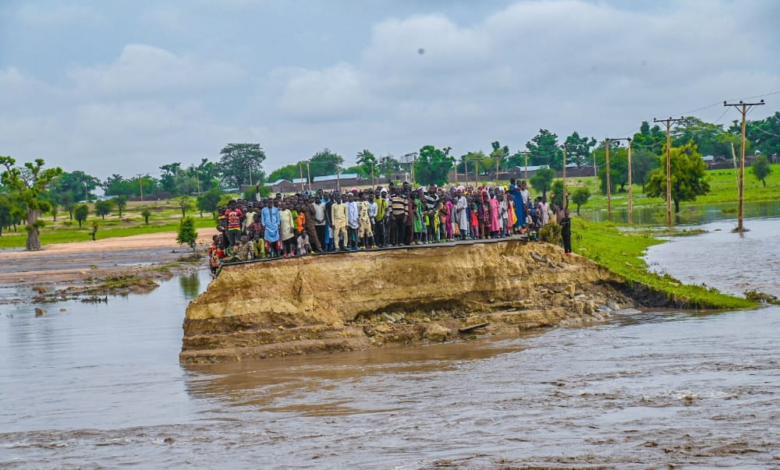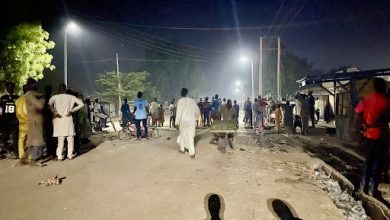Worst Flood In Decades Devastates Communities In Northeast Nigeria
At least 11 people were killed after a river overflowed its banks in Nigeria's northeastern state of Yobe. The disaster is considered the worst in decades.

Heavy flooding led to the death of about 11 people and widespread destruction in Gujba and Gulani Local Government Areas of eastern Yobe state in Northeast Nigeria. The overflow of a local river caused the disaster.
For families in Buni-Gari, Ligdir, Garin Doya, Kukuwa -Tasha and Bumsa, Bara, Gurui, Dokshi, Bularafa, Garin-Tuwo, Teteba, Njubulwa Sabai communities, July would be remembered due to the impact of the flood that swept through their communities and led to the loss of relatives and friends.
The disaster also led to the hospitalisation of 95 persons of the communities after sustaining various degrees of injuries and the destruction of properties worth millions of naira.
“The flood collapsed many houses and damaged stored food items. People are in critical condition as they are trying to cope with the situation; women are bringing out their room materials to be dried,” said Ahmed Ishak from Buni-Yadi.
He laments that victims need additional support even though the state emergency management agency had provided some assistance “because the damage is beyond imagination, some towns have even been washed out by the flood”.
When the state deputy governor visited Buni Gari, about 53 km from the state capital of Damaturu, it was said that about 360 houses were destroyed, according to Malam Ali Karaga, a resident of the nearby town of Buni-yadi.
The cost of the damaged properties was also estimated to be millions of naira. He reveals that “some victims have temporarily settled down in some public buildings while others settled with their relatives”.
According to Ali, personnel of the state emergency management agency were on the ground on the day of the incident and distributed some relief materials, including maize in Buni-Gari, a town also affected by the insurgency plighting the region.

In Gulani Local Government Area, the effect of the flooding was also devastating. The state governor, in a statement, said a 500-meter road linking Gujba with Gulani, along the borders with Borno and Gombe, was washed away by the flood.
Farmlands were lost, including some that were less than three weeks from harvest season, says Usman Abba Bumsa.
“A community named Bulumkutu has completely washed away, and the bridge connecting some of the local government with the other part of the state was destroyed by the flood making it difficult to render emergency intervention support,” Usman adds.
The emergency response team reportedly improvised and used canoes to move relief materials. Usman attributes the cause of the flooding to the overflow of the nearby river, and he believes in preventing further occurrence, the government needs to construct a dam to serve as a reservoir.
Flooding usually occurs when there is unexpected heavy rainfall within a given period; secondly, anthropogenic activities can result in flooding, noted Babagana Boso, a lecturer in the Department of Geography at the State University in Damaturu.
“What we experienced in recent days, particularly in Gujba and Gulani, is as a result of heavy torrential rainfall that resulted in the displacement of thousands of people, where lives were also lost and properties worth millions of naira were destroyed’’ said Babagana.
He spoke on the importance of early warning data on rainfall and proactiveness, stating that information available from individuals indicated that the volume of rainfall, particularly in Buni Gari, had not been witnessed for over 40 years.
Babagana echoed the concern around the local river. “We have a river in Buni-Gari, and its channel was silted up,” he said, adding that infrastructure development in the town has contributed to the problem following the channelling of drainage to the river. “So when the conveyance (water body) is not good enough to contain the water, it can overflow, and that is what has happened.”
The Executive Secretary of the State Emergency Management Agency, Goje Mohammed, in an interview with HumAngle, disclosed that about 11 lives were lost. At the same time, 95 persons experienced various injuries, and some victims had already been discharged from the hospital.
According to Goje, the heavy rainfall that caused the flood was unprecedented since 1973 (about 50 years ago), despite a warning from the country’s meteorological agency to prepare in advance and his agency’s response. He adds that there is still a need for other interventions from other partners to fill the wide gap.
He says that the state Governor, Mai Mala Buni, had directed the Ministry of Works and other relevant agencies to reach out to the National emergency management agency and Federal Roads Maintenance Agency to complement the effort of the state government, especially in reconstructing the bridge and addressing the situation of the displaced person finding refuge in some public buildings.
The Governor was reported to have set up a local government emergency management committee to reduce the time taken during emergency responses. The state emergency agency head recently said that the Meteorological and Hydrological Services Agencies had predicted Yobe among the 32 states likely to experience flash floods.
It prompted an advisory to residents in areas prone to flooding such as Potiskum, Gashua, Nguru, Fika, Gaidam, Damagum, Gujba, Gulani, Damaturu local governments and those living near floodplains to take precautionary measures.
On the possible solution to the flooding, Babagana, who also doubles as chairman of the Nigeria Environmental Society, Borno and Yobe State Chapter, says where there is a river system, authorities should de-silt the river. This, he adds, will allow the river to absorb runoff whenever it rains, “even if it is heavy”, thereby preventing overflow and destruction of farmlands and settlements.
He also stressed the need to stop people from farming near the river because that contributes to the problem. Adding that timely response to the prediction by the meteorological agency was important alongside the provision of the capacity for prompt action where incidents occur.
A recent REACH Initiative report stated that flooding led to the displacement of hundreds of households, with some communities also being cut off from neighbouring settlements and essential supply routes.
Nigeria has several agencies and ministries with varying degrees of responsibility to mitigate, prepare and respond to environmental disasters, including flooding. One such agency is the Hydrological Services, which operates and maintains over 200 hydrometric river gauging stations for monitoring and measuring river flow, including elevation.
The state, on its part, has a similar network of local institutions assigned to coordinate disaster prevention and management, such as emergency agencies and ministries works, Humanitarian Affairs and Disaster Management.
This report was produced under the HumAngle Accountability Fellowship, with the support of the MacArthur Foundation.
Support Our Journalism
There are millions of ordinary people affected by conflict in Africa whose stories are missing in the mainstream media. HumAngle is determined to tell those challenging and under-reported stories, hoping that the people impacted by these conflicts will find the safety and security they deserve.
To ensure that we continue to provide public service coverage, we have a small favour to ask you. We want you to be part of our journalistic endeavour by contributing a token to us.
Your donation will further promote a robust, free, and independent media.
Donate HereStay Closer To The Stories That Matter




